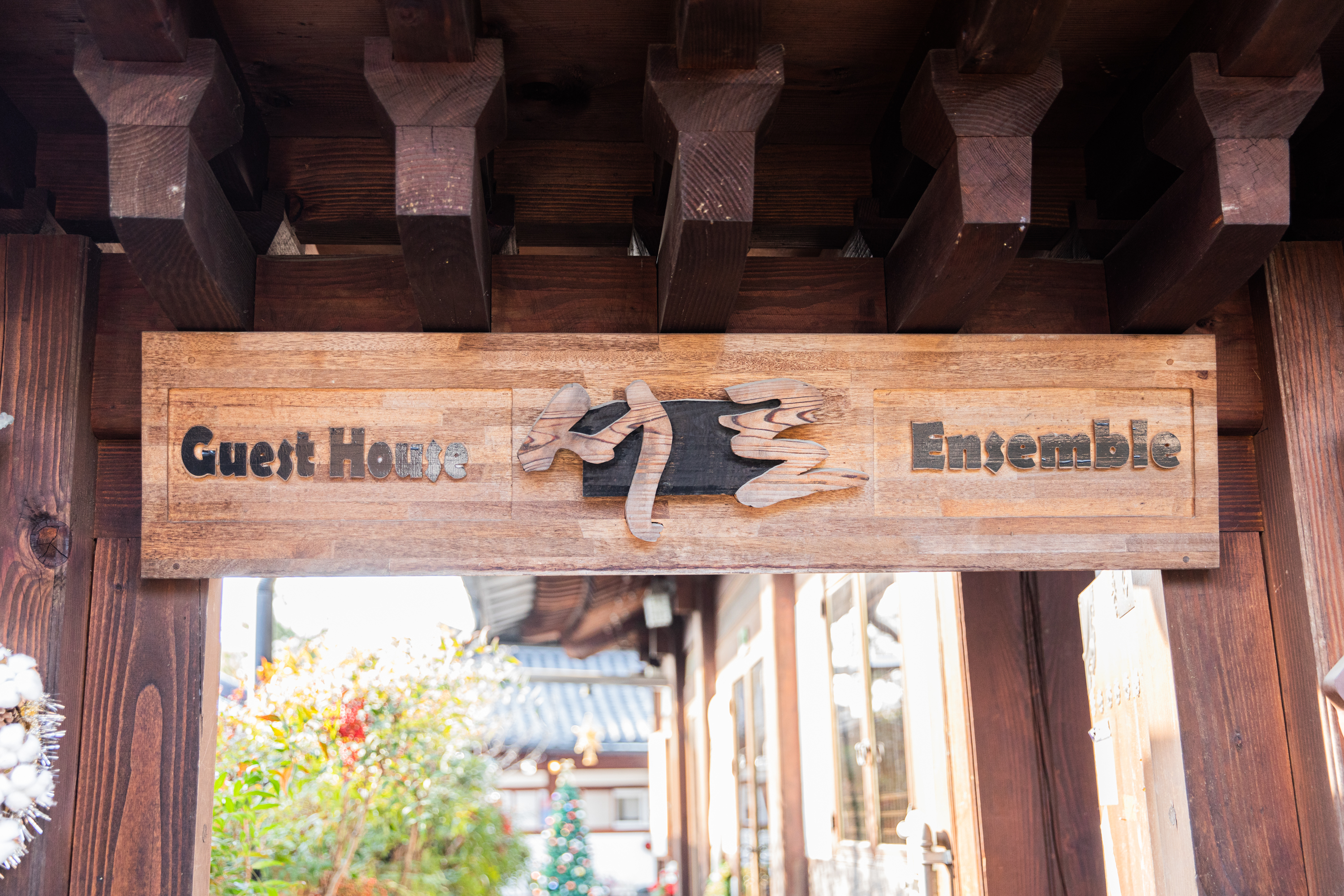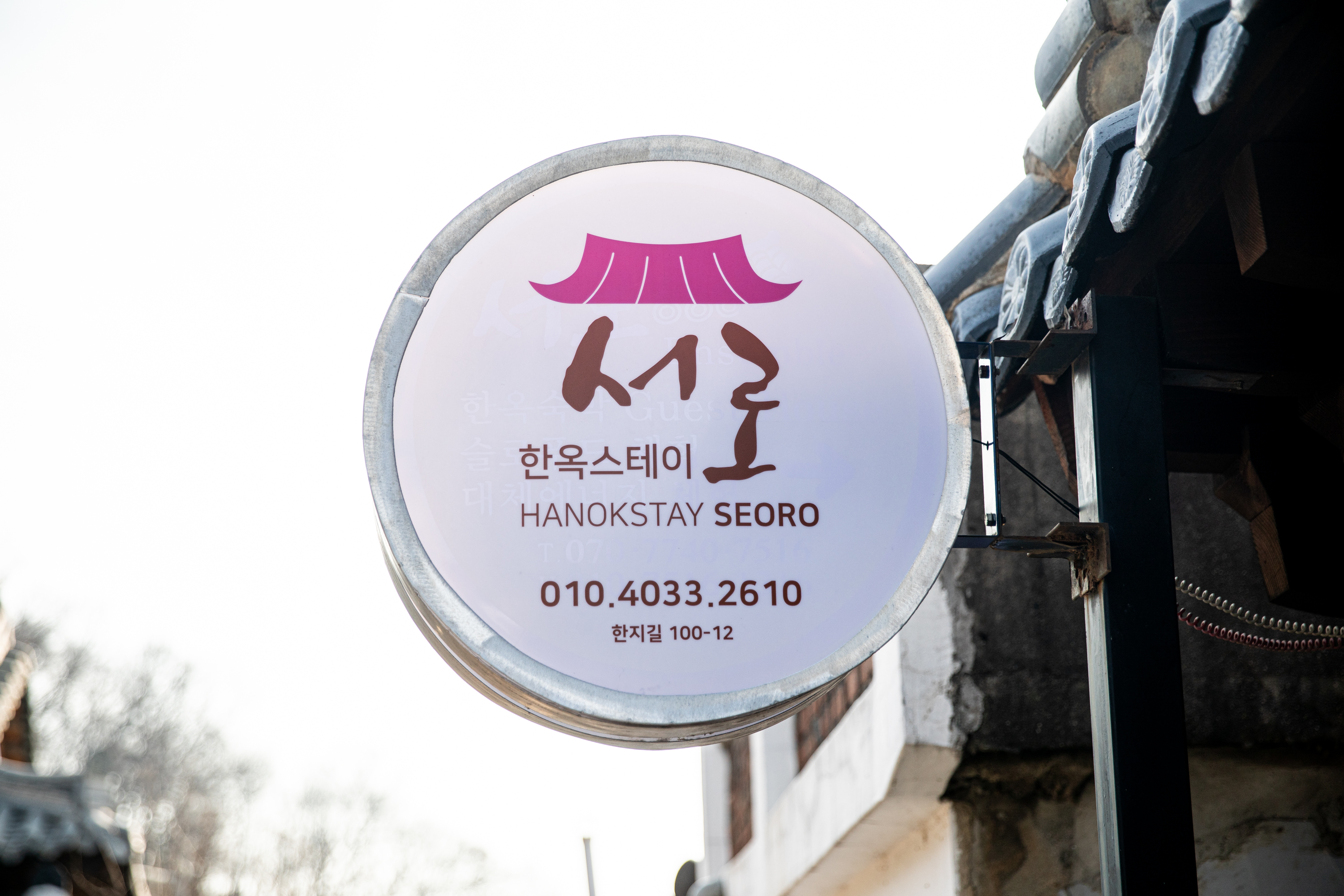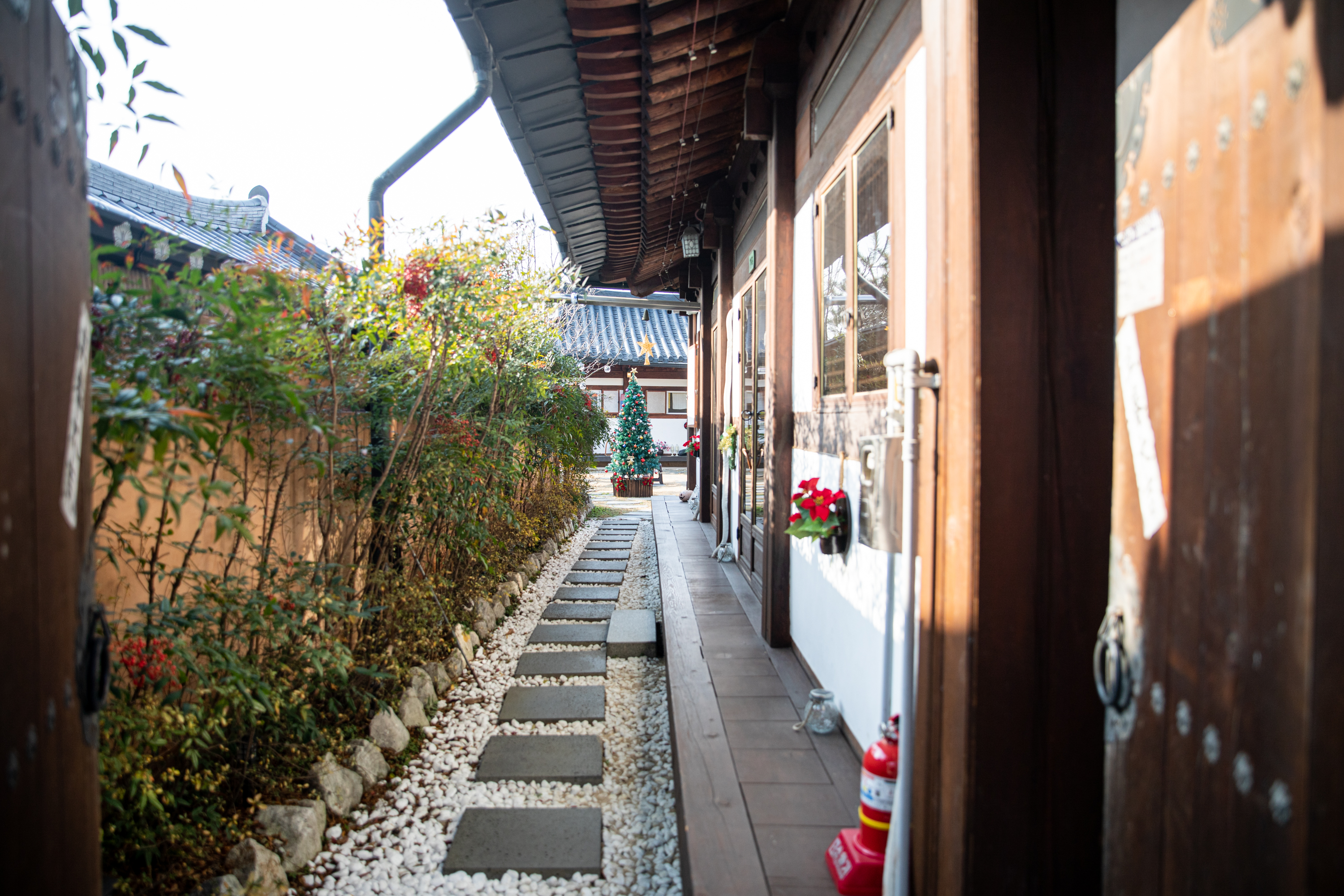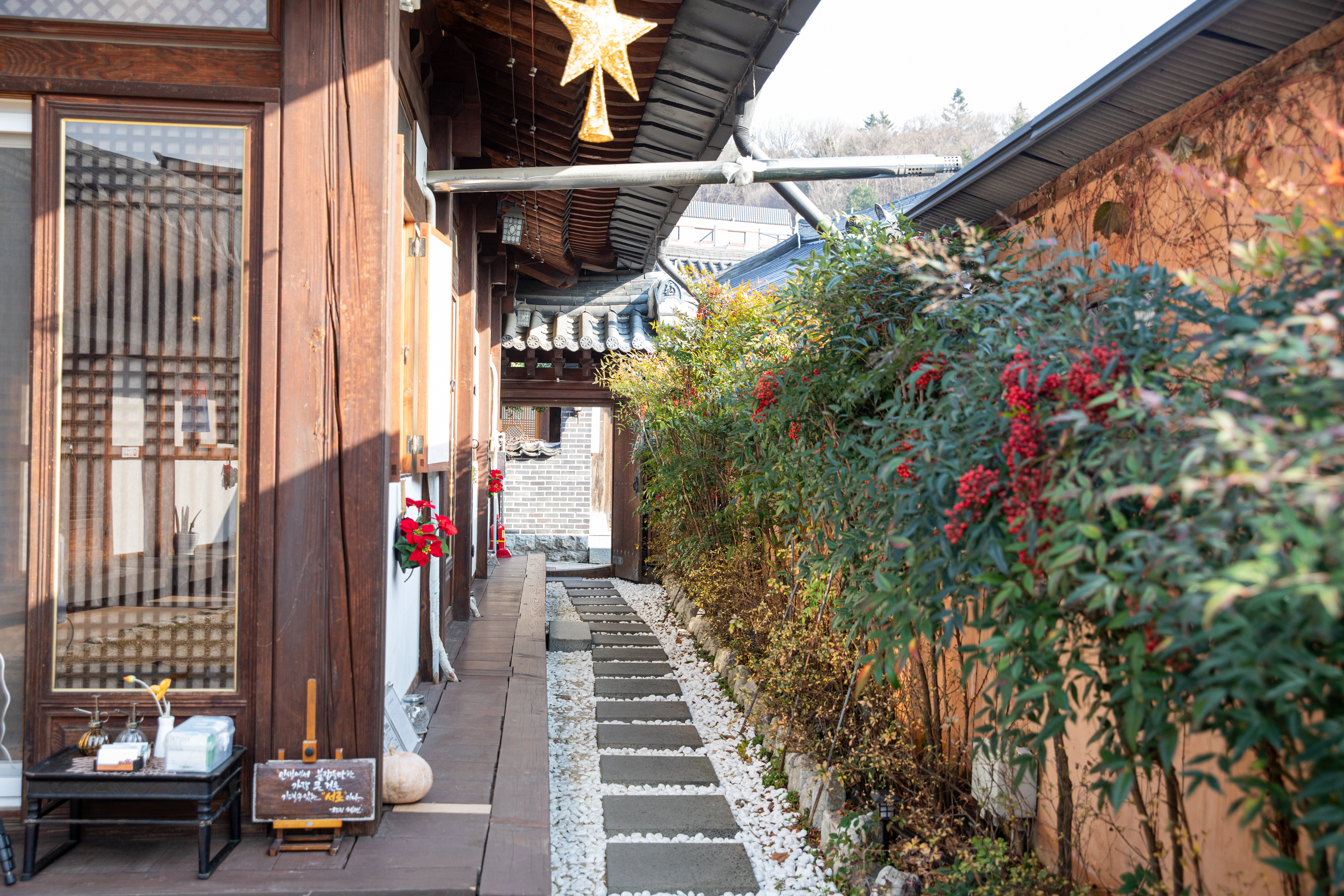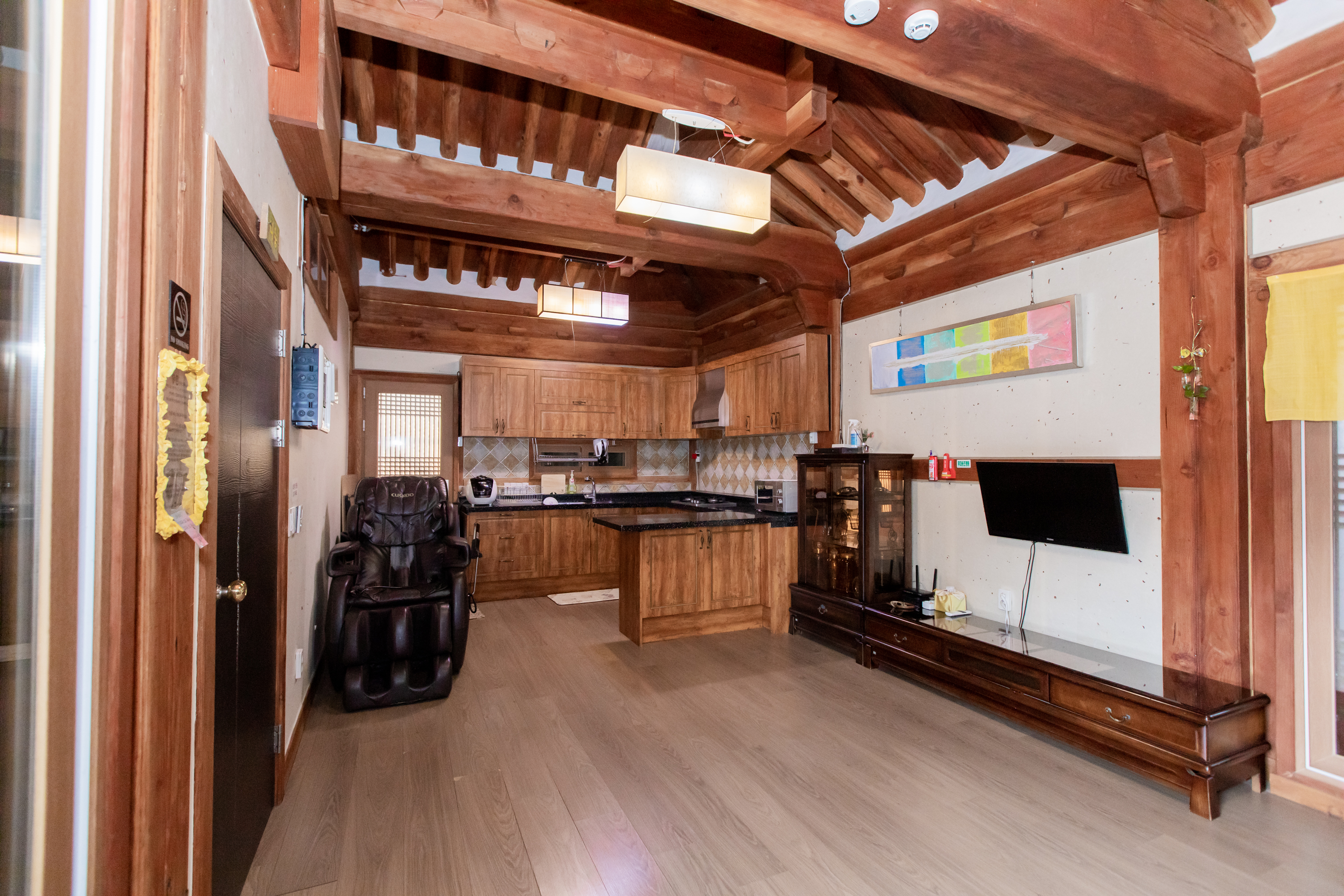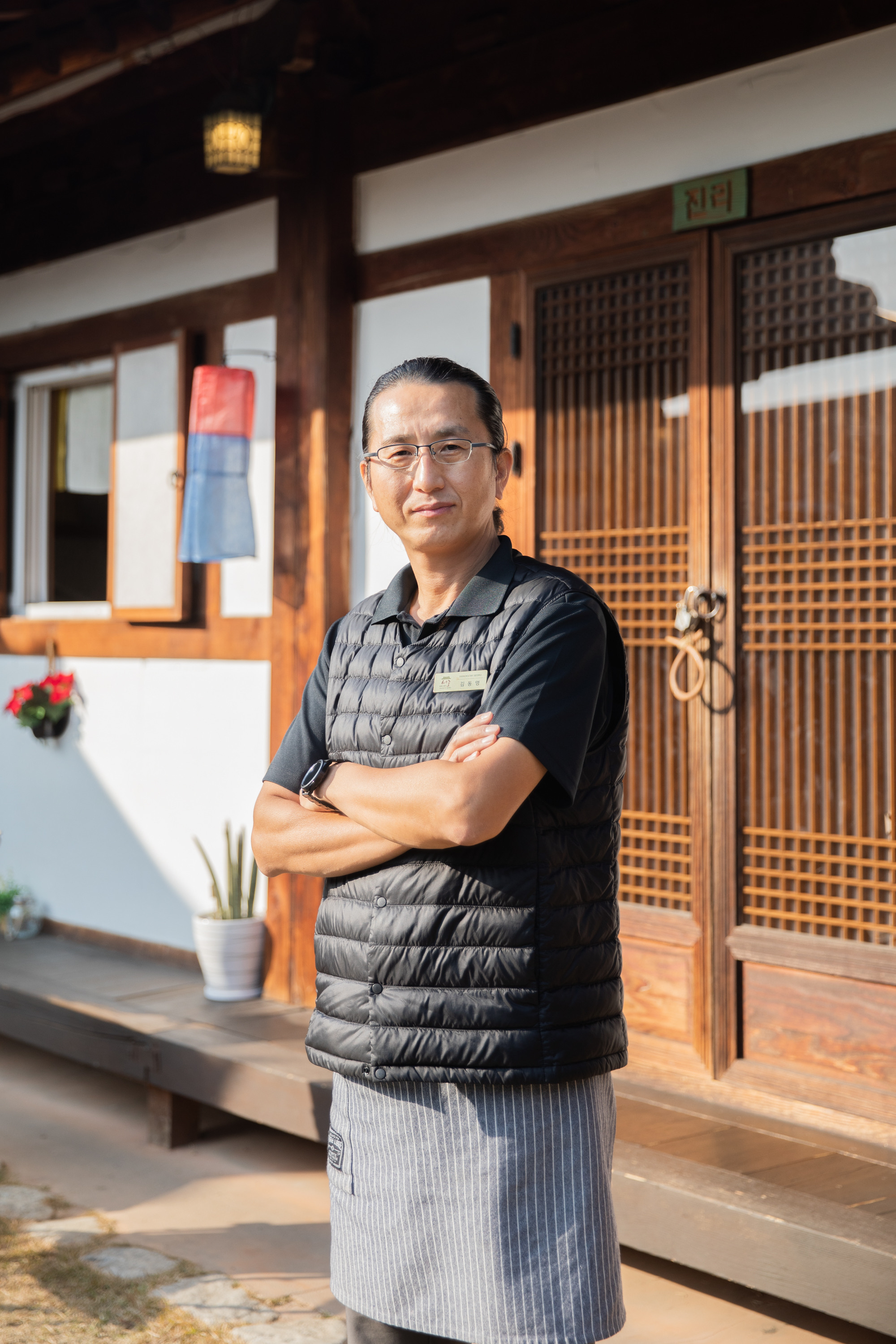
“Working as a psychologist, I felt that emotions were really important. Good emotions can help overcome some of the more difficult parts of life. I opened Seoro because I wanted to have a welcoming place, a welcoming environment to offer travelers, and give them a chance to create some good emotions.”
“Seo” in Seoro comes from the Chinese character “徐,” which means “slow” or “tranquil.” If you break down each part of the character 徐, it means “a house built on a tree, and walking slowly.” The “Ro” in Seoro technically means “the remaining,” but I used its other meaning, “margin.” Put together, Seoro means to “walk slowly, walk leisurely.”
Seoro is a traditional Hanok built with pine and red clay. The spacious courtyard and garden with a view of Omokdae, and wooden porch serve up a nice, tranquil look that is unique to Hanok buildings. Moreover, Seoro is located in one of the three most beautiful alleys in the Hanok Village, which makes the walk to and from Seoro an enjoyable experience in and of itself. At Seoro, you can rest in silence and comfort.
It hopes to be a place people remember for its comforting ambiance, and a place people want to return someday.


